How to Use the Paris Metro
The most used means of transportation in Paris is the metro. Knowing how to use it is essential for you to get the most out of your stay and visit all the attractions the city has to offer.
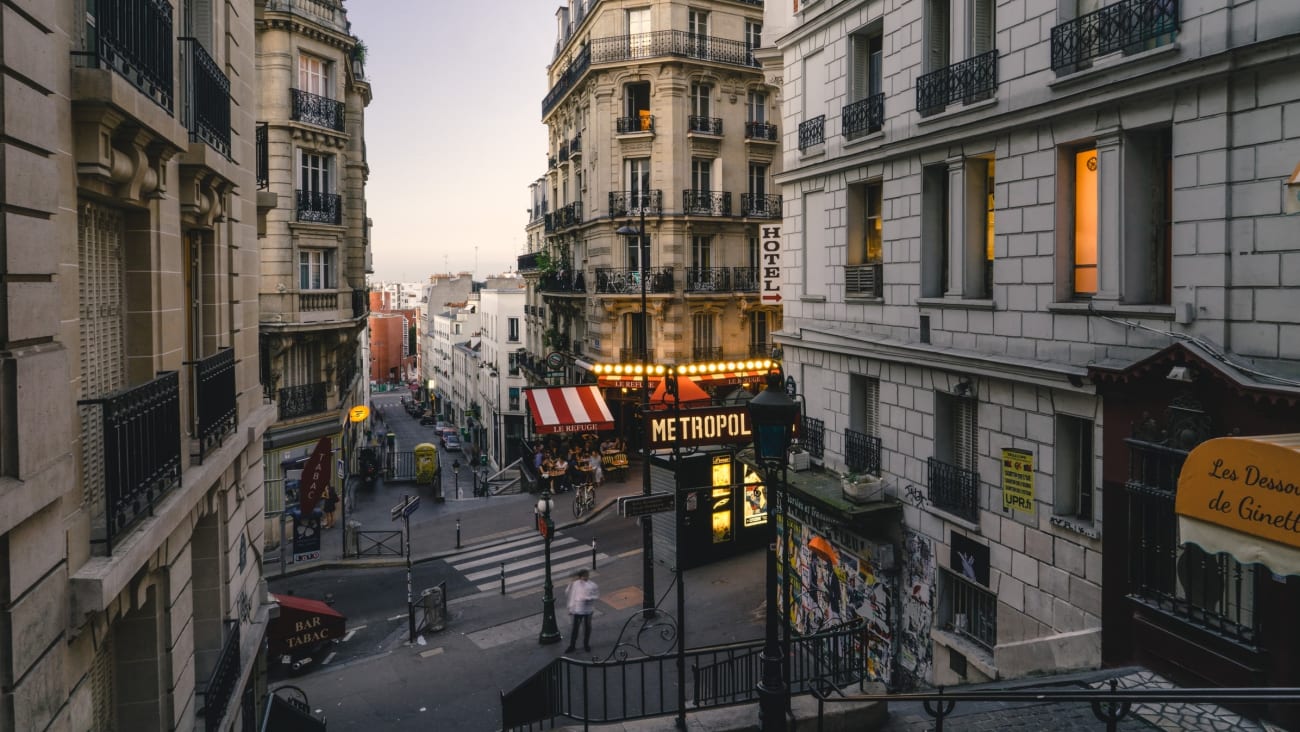
Rue de Montmartre, Paris | ©John Towner
Although there is nothing like walking to get to know a city, the size of Paris sometimes makes it necessary to use some form of public transport to enjoy all there is to see in Paris. The French city has a good network of urban buses, but the metro is undoubtedly the best option for getting around the city.
The Paris metro has been in operation for over 100 years and the city has been modernizing and expanding it to make it one of the largest subway transport systems in Europe. Proof of its usefulness is that the distance between stations (more than 200) does not normally exceed 500 meters.
How the Paris metro works

The first thing you should know is that tickets for the Paris metro can be purchased:
- At the self-service machines in the stations: this is the best option and the instructions come in several languages, including English.
- At the ticket offices: they are not usually open.
With the ticket purchased, you have to insert it in the turnstiles of the station to be able to pass. Never forget to pick up your pass or ticket once you have passed the turnstile barrier, as you will need it to exit the station at your destination. Unlike in other cities, you will have to press a button to enter the carriage, as the doors do not open automatically.
Differences between the metro and the RER

The RER is a kind of commuter train that takes you to locations near Paris but outside the city. There are five RER lines, although you will most likely only use three of them during your visit:
- Line A: connects Paris with Disneyland Paris and is one of the most popular ways to get to the park if you haven't booked an excursion from the capital.
- Line B: it leads to Orly and Charles de Gaulle airports.
- Line C: connects the French capital with the Palace of Versailles.
Another important aspect is that you will be able to use the same ticket for both types of transport (RER and metro) in case you need to transfer between them.
Paris metro zones

When you first look at a map of the Paris Metro, you will notice the division of the city into zones. These are sort of imaginary rings that divide the city and have their importance when it comes to using the subway transportation, as it affects the cost of it.
However, you shouldn't worry too much, as the vast majority of hotels and tourist attractions are concentrated in zones 1-3. Normally, you will only leave these zones if you are going to Disneyland Paris, Versailles or Charles de Gaulle or Orly airports.
Paris Metro fares
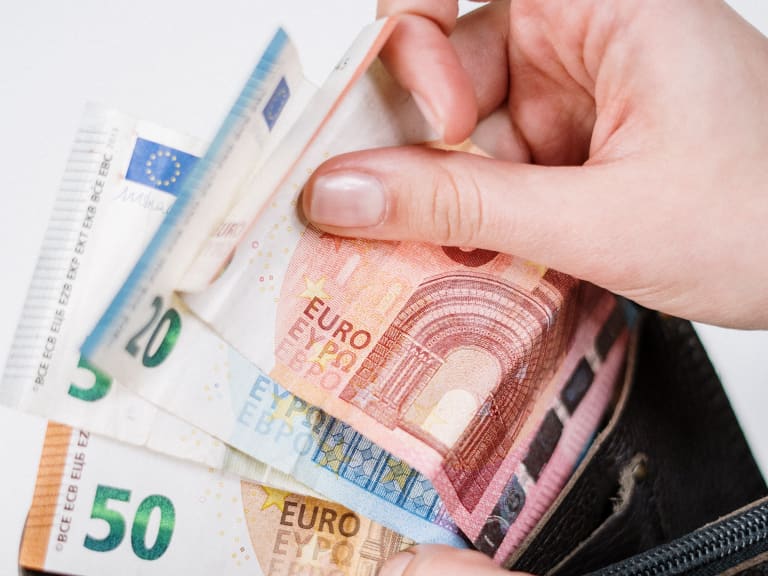
Most people visiting Paris for a few days opt to buy the Metro ticket called T+. This is the cheapest and easiest option to use, but it is necessary to do the math to see if it is better to buy a pass.
The T+ Metro ticket is only good for one trip and can also be used on the RER, Parisian streetcars and public buses. Each of these tickets costs just under 2 €, but if you buy 10 such tickets you will get a discount of about 40 cents per trip.
With a Metro T+ ticket you can travel in zones 1 and 2, both on Metro and RER. This covers a good part of the main attractions of the city, such as the most important museums in Paris.
Paris Metro Passes
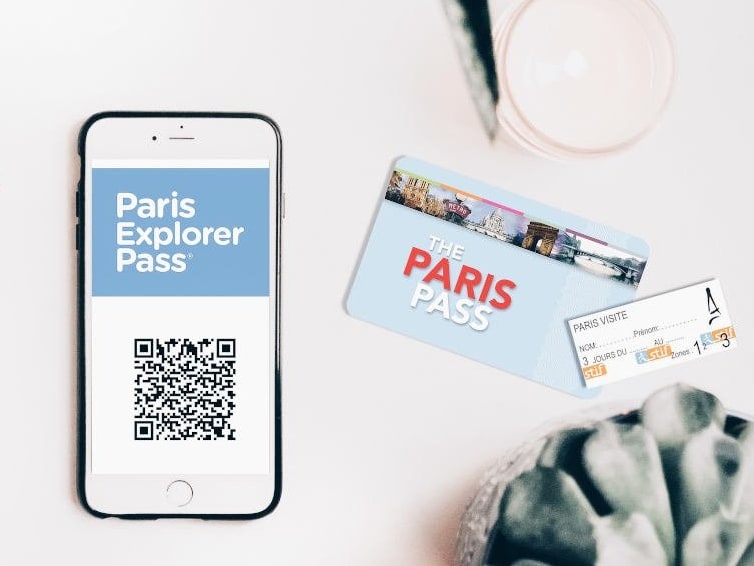
If your stay in Paris is going to be long(4 days or more in Paris) and you plan to use the Metro very frequently, you will usually be better off buying one of the existing passes. Note that this transport is no longer included in the Paris Pass tourist card, although it is still interesting for visits.
These passes allow you to use all types of transport in different areas of the capital. If you are interested, you will be able to choose between the following:
- Paris Visite: until some time ago, this pass was included in the Paris Pass, but now it is necessary to buy it separately. Its possession allows unlimited travel for a period ranging from 2 to 6 days, depending on the mode for which you pay. It also includes discounts for some attractions.
- Navigo Pass: in principle, this pass allows the same type of travel as the Paris Visite, but it only works for full weeks, that is, from Monday to Sunday. To buy it, you will need a passport photo.
Paris metro schedules and frequency
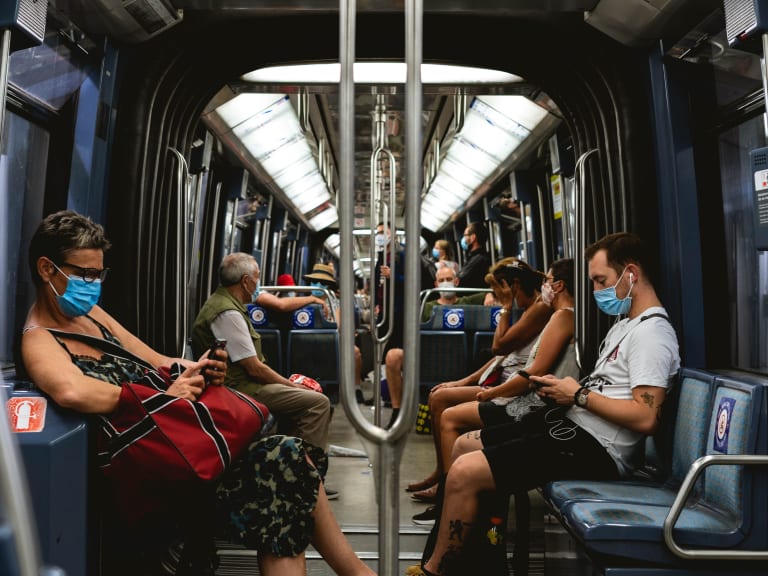
The first train of each line of the Paris Metro departs at 05:30 in the morning, while the last train leaves at 1:15 in the evening from Sunday to Thursday and at 2:15 on Fridays and Saturdays.
To find out if the train is the last one of the day, just look at the lights on the front of the train: if they are flashing, it is the last one. If you are unlucky and miss it, you can only use one of the night buses to move around Paris, the so-called Noctilien, or call a cab.
As for the frequency, it varies depending on the time of day, but in general you will not have to wait more than 4 minutes during most of the day.
Most important lines of the Paris metro

The Paris Metro has 16 lines to complete a transport network of about 200 kilometers. There are more than 300 stations in the city so that no Parisian or visitor has to walk too far to find one.
Each of the lines is numbered and assigned a color so that they can be easily distinguished on a map. Chances are that if you are visiting the city to see its best museums, monuments or gardens you will only use a few lines. In this aspect, there are three that stand out above the rest:
- Line 12: it is going to allow you to see the interesting Montmartre neighborhood and offers several possibilities to reach the Sacré Coeur basilica. Likewise, its Concorde station is ideal to reach the Tuileries Garden, right next to the Louvre museum. Its next stops are also perfect for visiting the Musée d'Orsay.
- Line 6: the Charles de Gaulle Etoile station on line 6 will take you very close to the Champs Elysees and the Arc de Triomphe. On the other hand, if you get off at the Trocadero stop, located in the square of the same name, you will have a great view of the Eiffel Tower. Line 6 will also allow you to reach the Montparnasse Tower and the catacombs of Paris.
- Line 1: the route of this line connects, among other places, the Champs Elysées with the Arc de Triomphe. On the other hand, if you get off at the Concorde or Tuileries stations, you can easily visit the Louvre. The trip can be extended to the Ile de la Cite, where you can see the wonderful Notre Dame Cathedral or the Conciergerie.
Take note of these stations to reach your destinations more easily
To travel with the Paris Metro is not only important to know the route of each line. Knowing the name of the stations you are most interested in is essential to avoid getting off at the wrong place. Here are some of the ones you may need:
- Champ de Mars: Champs de Mars and Eiffel Tower
- Opera: Opera Garnier
- Trocadero: Trocadero square and Eiffel Tower
- Abbesses: Montmartre
- Louvre Rivoli: Louvre museum
- Cité: Notre Dame Cathedral
- Saint Germain de Prés: St. Germain district
Paris metro stations worth a visit
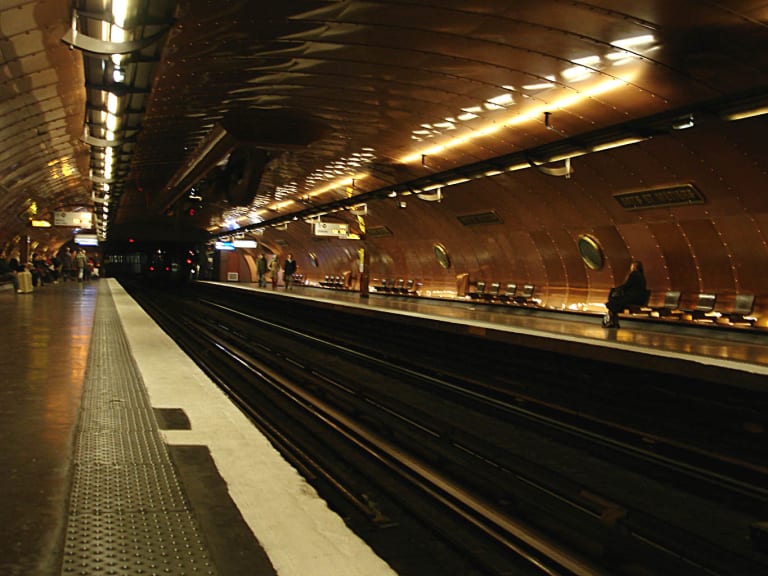
The Paris Metro is not only a great means of transport, but many of its stations are tourist attractions in themselves. Thus, some of the oldest ones have modernist-style entrances, while other more modern ones have tried to give an original touch to their design:
- Arts et Métiers station: (lines 3 and 11) is decorated in a style reminiscent of Jules Verne novels.
- Cluny - La Sorbonne station: has fabulous mosaics decorating its ceilings.
- Cité Station: it houses beautiful retro-style lamps.
- Louvre-Rivoli: it is decorated with copies of some of the most important works exhibited at the Louvre.
- Abbesses: has a wonderful fresco depicting a period in the history of France.
General tips for using the metro in Paris
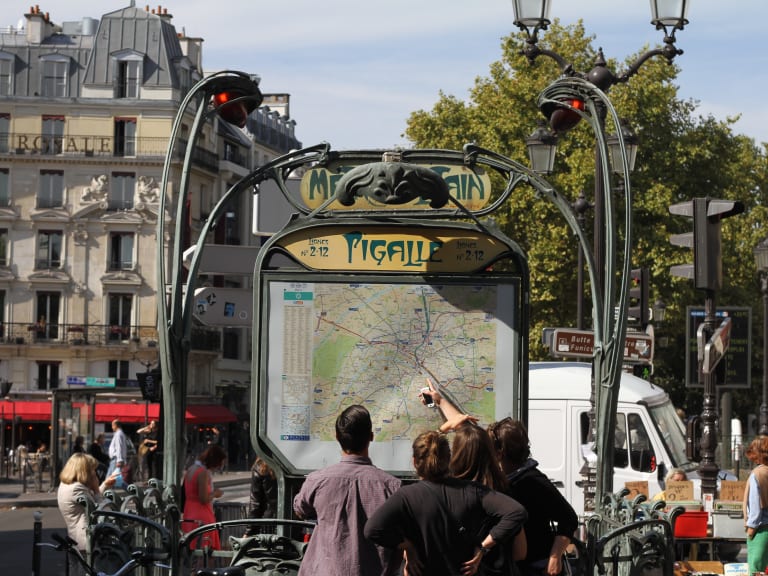
A great tool to get around the Paris Metro without having problems is to download the Next Stop app, the official application of the company RATP, responsible for the management of transport in the city.
The application is in 10 languages (including Spanish), includes small audio guides of some of the most important tourist attractions in Paris and can be used offline. But most of the Paris metro stations have free WiFi connection that does not require prior registration.
If you are concerned about security, you should know that the entire network is monitored at all times by security guards, inspectors and security cameras. However, you should always be aware of your possessions in the busiest sections, as there may be pickpockets in the area trying to take advantage of the crowds.
